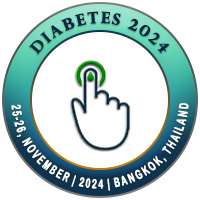
Aharon Leiberson
Laniado Hospital, IsraelTitle: Soft tissue tension and negative pressure for tissue defect closure in diabetic foot
Abstract
Introduction: Excisional debridement of infected diabetic foot with damage of plantar fascia and flexion tendons forms significant tissue defect demanding prolonged treatment. Several methods are applied for complicated wounds treatment, including VAC therapy and soft tissue tension, but application of those methods have challenges in home conditions.
Material and methods: We present a patient, suffering from diabetes type 2 and gangrene of toe 3 due to PVD. After vascular treatment and improvement of blood circulation dry gangrene turned to wet one with spreading of infection in the plantar foot surface with necrosis and maturation of flexor tendon and plantar fascia. In admission was diagnosed the infected diabetic foot and performed operation excisional debridement with removal of tendon and plantar fascia and forming of significant tissue defect. Continuing wound treatment provided reduction of suppuration and VAC therapy started.
For wound cavity closure was applied soft tissue tension. The concept was developed by prof. Morris Topaz and performed by application of device "Top Closure", usually combined with negative pressure and continues wound irrigation and oxygen supply. This technology demands hospital conditions and is rather expensive. In outpatient conditions we combined Top Closure with once daily wound cavity washing by Prontosan.
Results: Applied treatment provided complete wound healing with forming of clean eschar and ambulation in regular shoes with orthopedic insoles.
Conclusion: This case may illustrate the ability of closure significant tissue defect in the foot, by tissue gradual tension and wound washing providing more choices in diabetic foot treatment, especially when soft tissues are severely destroyed.
Biography
TBA

